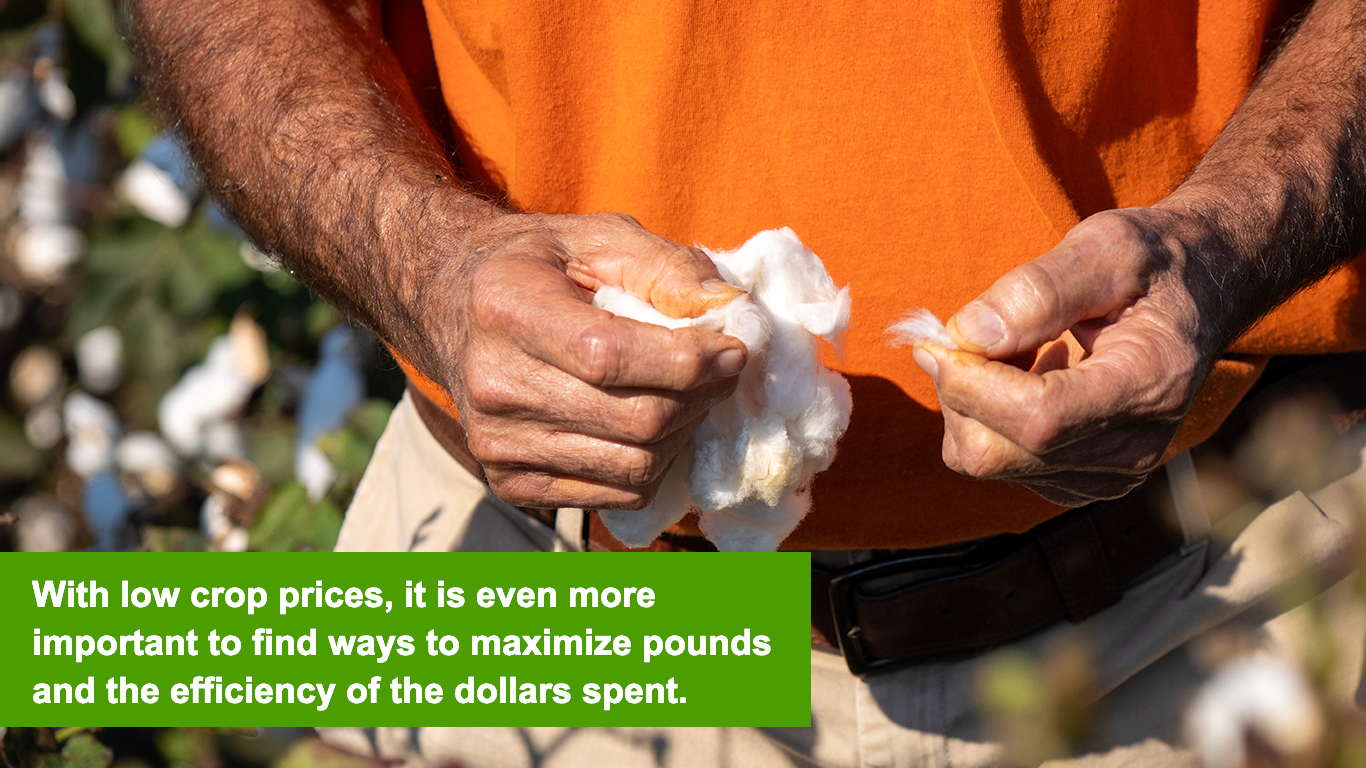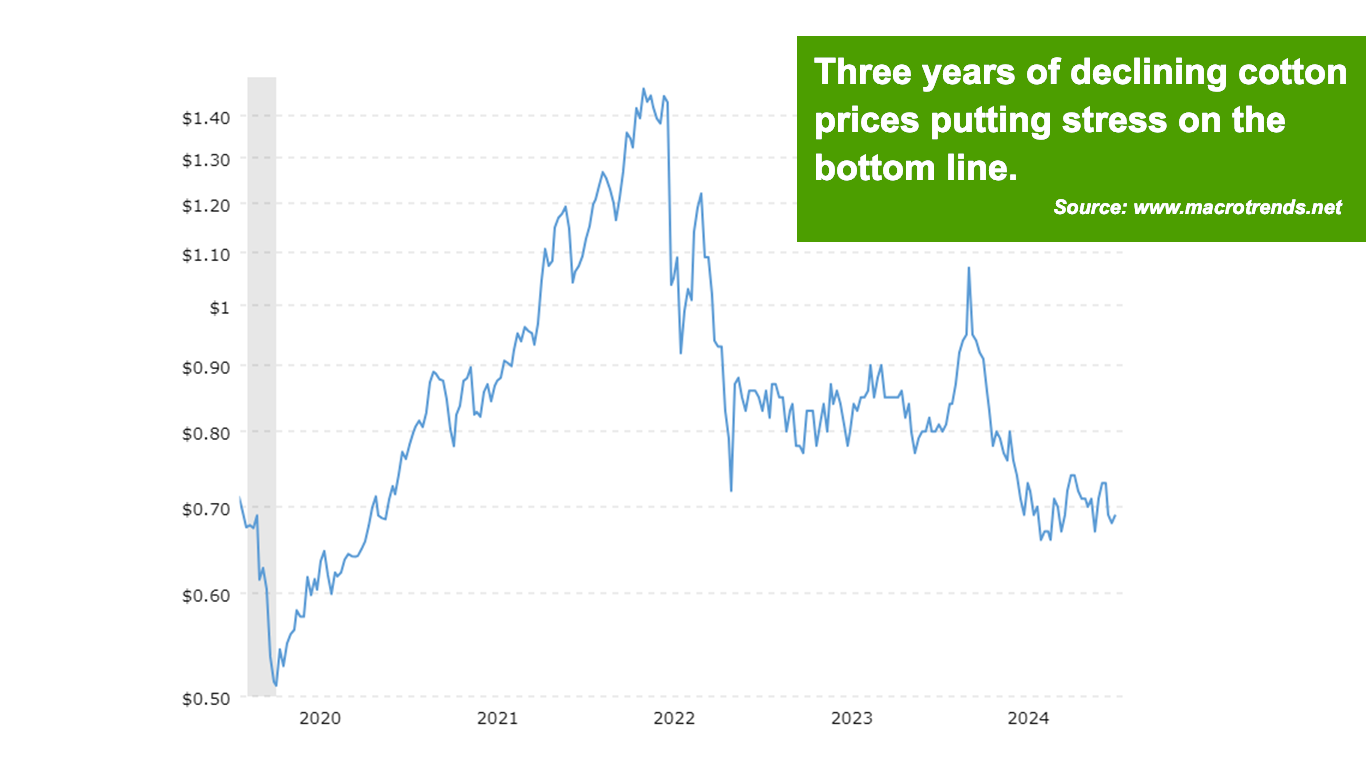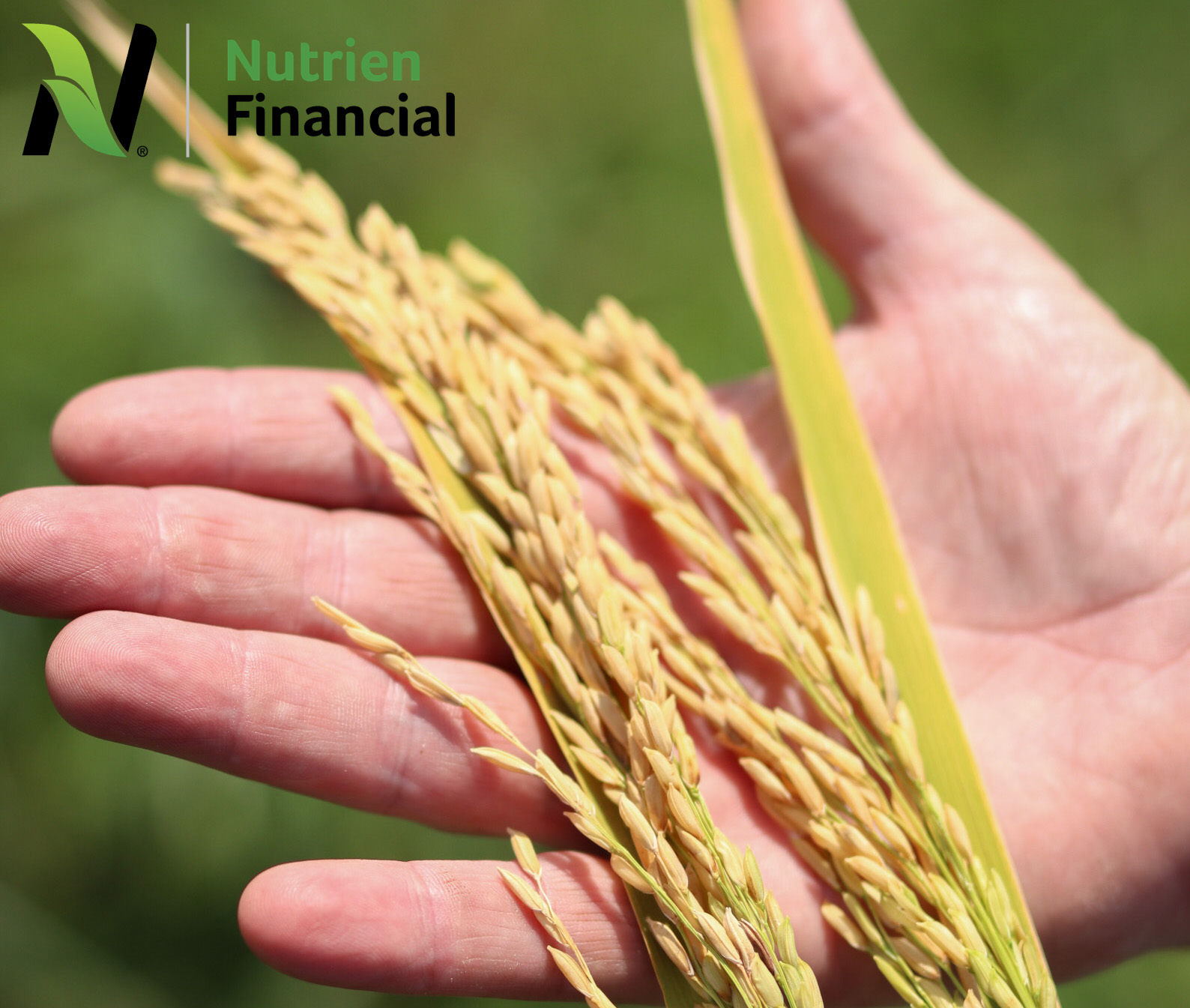Want to stay caught up in all things agriculture? Sign up for the newsletter and get all the latest news straight to your inbox.
From Good Yields to Smart Strategies: Thriving in a Tough Cotton Market
By: Justin Little
Cotton farmers across the country may have had a good crop year, but low commodity pricing is making things difficult. Even if someone has a banner year for their crop, the commodity prices make capital management strategies critical right now. It’s also even more crucial to make sure you have a good yield to offset the pricing challenges. Farmers can effectively face these challenges head on with the right mix of high-quality inputs and flexible payment options.
Feeling the pinch
Cotton commodity prices have been decreasing for the last few years. Average closing price was $1.12 in 2022 and as of drafting this article, it was closer to $0.78. That’s putting producers in a tight spot since the cost to grow has increased exponentially.
We’re not seeing the appreciation in the commodity price, but we are seeing appreciation of the expense. These growers must be massive capital management experts in order to produce a crop and be profitable with it.
“I think capital efficiency becomes important in years like this one,” says Dillon Cox, Loveland Sales Manager at Loveland Products, Inc. “If you have high commodity prices, you have a bit more wiggle room and can still be profitable. When you have poor commodity prices, you really must dial in your inputs in a way that makes every dollar the most efficient it can be.”
Maximizing yields
To stretch how far their dollar goes, producers need to maximize their yields. There are a lot of products out there that can help.
“It’s about finding the right mix of products and making sure you’re doing all you can to increase efficiency with application techniques,” says Dillon. “Do we need to change the way we’re applying fertilizer? Maybe we apply in season to increase efficiency. We want to make those dollars go further by selecting the right products and applying them at the right time in the right way.”
A few of the options Dillon recommends for cotton growers are: POTENZA, a Mepiquat Chloride that promotes increased root growth; LOKOMOTIVE, a Foliar Potassium Acetate to support fertility needs; and NUTRISYNC BORON, a Foliar Boron formulation designed to increase uptake and translocation of Boron.

The product mix is always important, but even more so in a year where commodity prices are low. “If you’ve got a cotton price that makes it difficult to be profitable, there’s no getting around that,” says Dillon. “When crop prices are low, it’s even more important to tailor programs to the specific farmer, all the way down to the field. Because we need to maximize pounds AND the efficiency of the dollars being spent.”
Rotating crops
Some regions have better options than others to rotate to a different crop if commodity prices don’t budge. Although switching to a different crop may require additional costs that growers may not want to shoulder.
“For cotton growers, there may be other crop options that are more appealing from a price point, but different crops have different equipment and infrastructure needs that cotton growers may not have,” says Frank Groves, North American crop lead of cotton, rice and specialty at Nutrien Ag Solutions. “The cotton and corn market situations look very similar to last year. Everyone expects credit to be more challenging in ’25, so we may see a boost in soybean and sorghum acreage with growers trying to minimize risk.”
“We have to also keep in mind the equipment needed for rotations,” says Andrea Herbst, Territory Manager at Nutrien Financial. “If someone has been growing cotton their entire lives, and now they want to switch to corn, they probably don’t have a means to harvest that. It would make more sense if corn prices were higher, but they aren’t right now.”
If a cotton farmer wants to rotate to a different crop, soybeans may be a good option. “It’s difficult to find a winner across the spectrum right now, but soybeans have the least number of inputs and the least amount of risk,” says Frank.
Managing capital
While this past year has been rough, there are some things growers can do to make sure they’re as prepared as possible to ride the ups and downs and come out on top of the next season. Relentless capital management is essential, making sure every dollar and every cent is spent as efficiently as possible, but also planning for the tough years like 2024.
Some people live high on the hog in the years that they’re doing well, but in my mind, those are the years to save. In the years that you’re doing the best, live as if you’re doing the worst so you have some money sitting back when you need it.
Working with the people you trust and leveraging mentor relationships is a good way to gain perspective over the current situation. People who have been through it before can help talk things through and give advice rooted in experience.
At Nutrien, we want to be the people who walk hand-in-hand with growers through this difficult time. It’s not going to last forever, but we know we can help make it a little better now.






